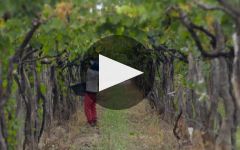Lamadrid Single Vineyard Cabernet Sauvignon 2009
Cabernet Sauvignon
-
Robert
Parker
3.3 Good
(8)
Sold Out - was $15.99
Ships Wed, Apr 24
You purchased this 3/5/24
0
Limit Reached
You purchased this 3/5/24




Product Details
Varietal
Producer
Vintage
2009
Size
750ML
ABV
14%
Your Rating
Somm Note
Winemaker Notes
We strive for an Agrelo terroir-driven Cabernet Sauvignon that
has color and fruit concentration that over-delivers at its price point.
Professional Ratings
-
Robert Parker's Wine Advocate
Purple, cedar, spice box, balsamic, black currant; outstanding depth, concentration, and length.
Other Vintages
2020-
James
Suckling
-
James
Suckling
-
James
Suckling
-
James
Suckling
-
Wine
Spectator -
Wine
Enthusiast
-
Robert
Parker
-
Wine
Spectator -
Wine
Enthusiast
CVF102768_2009 Item# 108300





